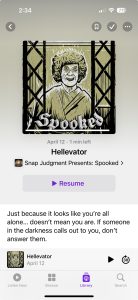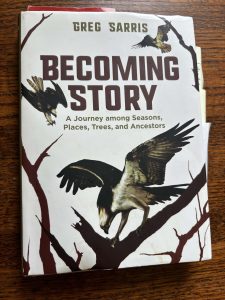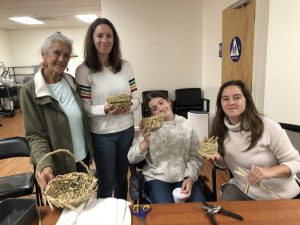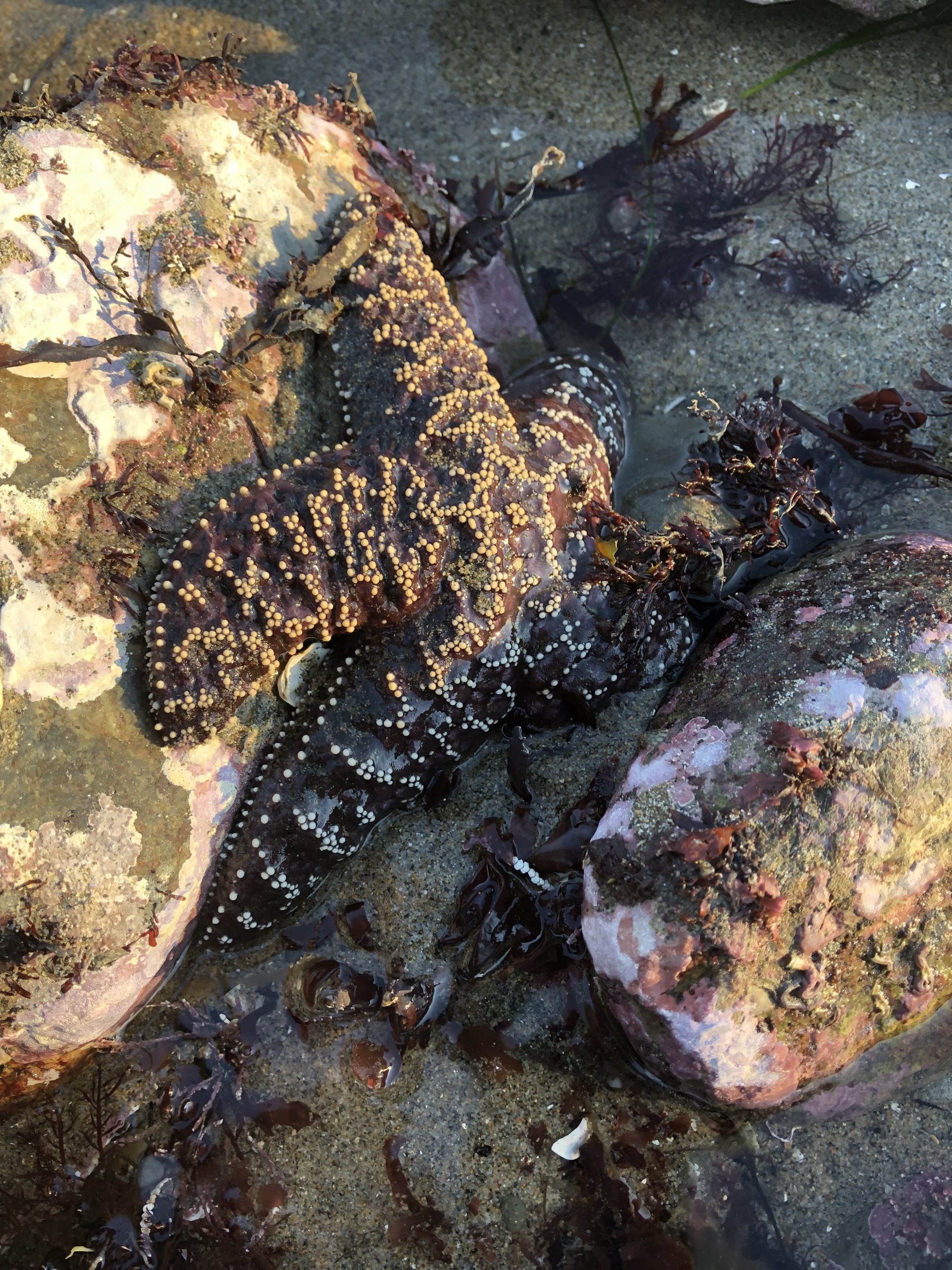 Okay, the title is actually the catch-phrase to the podcast, “Snap Judgment,” a sister podcast to “Spooked,” my all-time favorite and only podcast I binge-listen to. “Spooked” (a KQED/PBS production) is purely episodes of stories from real people accompanied by foley artistry and music. Each episode features a different person from around the world telling the story of their own paranormal encounter. “Snap Judgment” too is a podcast of amazing stories just told, as the host Glynn Washington says, “in the bright light of day.”
Okay, the title is actually the catch-phrase to the podcast, “Snap Judgment,” a sister podcast to “Spooked,” my all-time favorite and only podcast I binge-listen to. “Spooked” (a KQED/PBS production) is purely episodes of stories from real people accompanied by foley artistry and music. Each episode features a different person from around the world telling the story of their own paranormal encounter. “Snap Judgment” too is a podcast of amazing stories just told, as the host Glynn Washington says, “in the bright light of day.”
I find each one so enthralling because of the authenticity of the voice. I never tire of listening to someone else’s unique experience. Perhaps because of the amazing fact that each story is unique, but also perhaps because I want to add to my personal empathy repository by listening to and experiencing others’ emotions through their storytelling.
Piggybacking off of this, Michael Stephens notes in his article, “Office Hours: The Power of Stories Part 2” (2020) (literally an article about podcast storytelling) that “story-based experiences of all kinds can increase listeners’ understanding of diverse groups, demonstrate the value of everyone’s experience, and remind listeners of their shared humanity.” Yes, how we are the same and how we are different from one another. And marvel at those similarities and differences.
I checked in Barbara Kingsolver’s The Lacuna yesterday and as I was skimming the synopsis, a quote jumped out at me: “The most important part of a story is the piece of it you don’t know.” I thought, “how revelatory!” That is the thread we follow when we listen. What shape will the story take by the end?
I loved the Story Corps example “The Bookmobile,” from our module’s article, “How Libraries Save Lives” (Popova, n.d.). I’d seen more examples of these sprinkled in between episodes on PBS and each one evokes a tear. “Finding Your Roots” with Dr. Henry Louis Gates Jr.–another prime example of stories of people’s lives that I am somehow drawn into, no matter who they are. Genealogical research can tell a story and evoke “historical empathy” (my new favorite phrase).
Libraries enable us to learn about each other’s stories by connecting us in small snippets of encounters and, for some, much larger ways. I have recently been on a personal journey to become more connected to my Indigenous lineage. One of the most impactful ways we can learn about our ancestors is through storytelling. Below is a book written by our Tribal Chairman, Greg Sarris, which I’m reading currently and which I feel is a very important contribution to my own knowledge about our Coast Miwok ancestry.  I also attended a basketweaving class at our tribal headquarters with my sister, niece and daughter. Basketweaving is not only a physical symbol of weavers’ skill, but the activity itself allowed for people to exchange stories and information. Our experience allowed us to connect with other tribal members, share our family stories and engage in an ancient practice, which provided a small connection to our ancestors. Here we are with our finished products.
I also attended a basketweaving class at our tribal headquarters with my sister, niece and daughter. Basketweaving is not only a physical symbol of weavers’ skill, but the activity itself allowed for people to exchange stories and information. Our experience allowed us to connect with other tribal members, share our family stories and engage in an ancient practice, which provided a small connection to our ancestors. Here we are with our finished products.

Whether through a physical act of basketweaving, listening to a podcast, or by simply listening to a patron tell their story to you at the book drop, story-telling connects us to one another and passes on precious knowledge.
References
KQED & PRX. (n.d.). Snap judgment presents: Spooked. https://spookedpodcast.org/
Kingsolver, B. (2009). The lacuna. Harper.
Popova, M. (n.d.). How libraries save lives. The Marginalian. https://www.themarginalian.org/2016/10/06/libraries-storycorps-bookmobile/
Stephens, M. (2020, April 9). Office hours: The power of stories part 2. https://287.hyperlib.sjsu.edu/office-hours-the-power-of-stories-part-2/
StoryCorps. (2016, April 13). The bookmobile. [Video]. YouTube. https://www.youtube.com/watch?v=11OvHcgh-E4&t=1s

Hi Laura,
It is good to hear that libraries learn to listen to great stories and share their books to inspire others to know about diverse perspectives, especially American Indian stories. Thank you!
Thank you, Frances :). (Frances is also my middle name!)
What a lovely post and what a fun adventure to learn about your indigenous roots. I am sure it has been rewarding to learn of your ancestors by doing, by working with your hands. I am interested in the storytelling while basket weaving. I know many tribes tell stories through intricate pictures on their baskets. When you speak of telling stories, are you referring to oral stories? When looking at that are baskets made by Native Americans, I never really thought about what they were doing while weaving, but of course they told stories and chatted about every day happenings while weaving. What a neat thing to think about! What people were exchanging verbally while making the art you are looking at now. Neat. Thanks for the post.
Why, thank you, @emmizo! Yes, you totally tapped into what I was putting down–both that the baskets’ designs hold symbolic meanings (especially intricate ones), but also that it was a social activity. Indeed that was the case in our class. I found out who was related to whom and heard stories their families had passed down. Pretty cool stuff! Thank you for reading, your kind comments and glad you enjoyed.